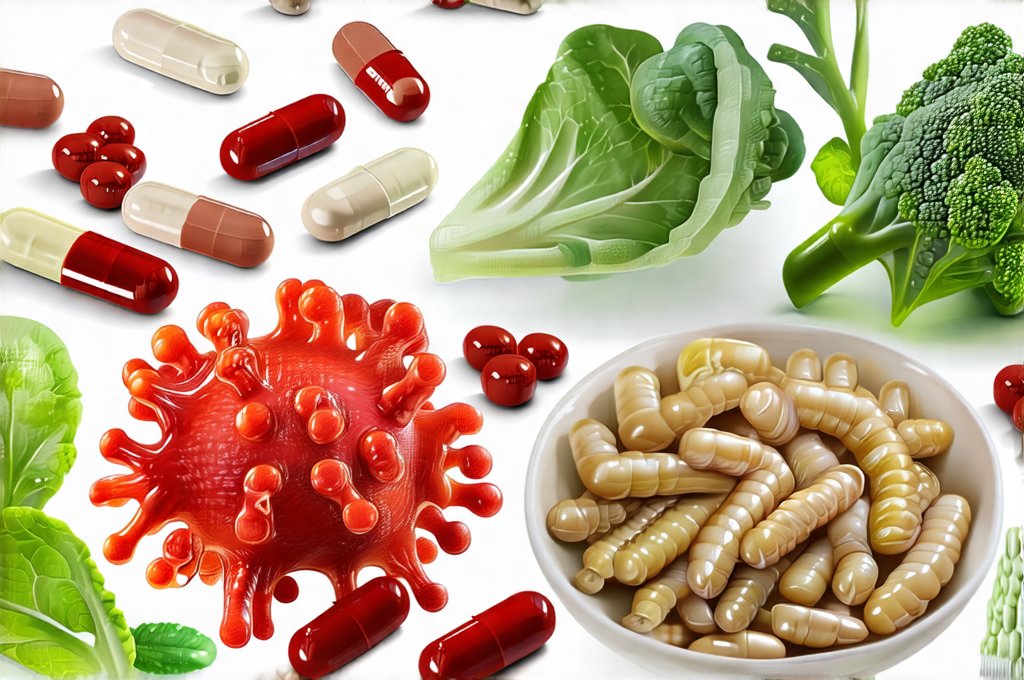The relentless rise of antibiotic resistance is one of the most significant public health challenges of our time. While antibiotics have been instrumental in combating bacterial infections for decades, their overuse has inadvertently led to the evolution of bacteria that are no longer susceptible to these life-saving drugs. This isn’t merely a future threat; it’s happening now, with increasing numbers of infections becoming harder – and sometimes impossible – to treat. Beyond the immediate danger of untreatable infections, antibiotic use profoundly disrupts the delicate ecosystem within our gut, known as the microbiome. This disruption can have far-reaching consequences for overall health, impacting digestion, immunity, mental wellbeing, and even chronic disease risk.
The aftermath of antibiotic treatment often leaves individuals with a depleted and imbalanced gut flora, creating an environment where opportunistic pathogens can thrive. Rebuilding this essential microbial community isn’t about simply introducing probiotics; it’s about adopting a comprehensive dietary strategy that nourishes beneficial bacteria while simultaneously minimizing inflammation and supporting the body’s natural healing processes. This “post-antibiotic diet” focuses on providing the building blocks for gut restoration, moving beyond quick fixes to cultivate long-term microbiome resilience. It’s a proactive approach to mitigating the collateral damage of antibiotic use and fostering a healthier, more robust internal environment. Understanding gut flora imbalance is often the first step to recovery.
The Foundation: Dietary Principles for Gut Restoration
The core principle behind a post-antibiotic diet is feeding your gut bacteria – specifically, the beneficial ones. This means prioritizing foods rich in prebiotics and probiotics, while simultaneously limiting those that exacerbate inflammation or disrupt microbial balance. Prebiotics are essentially food for your microbiome, providing the fiber and compounds that fuel the growth of beneficial bacteria. Probiotic-rich foods introduce live microorganisms directly into your gut, helping to repopulate the depleted flora. However, it’s crucial to remember that probiotics are most effective when they have a supportive environment – hence the importance of prebiotics. A holistic approach focuses on both aspects.
A successful post-antibiotic diet emphasizes whole, unprocessed foods, including a wide variety of fruits, vegetables, fermented foods, and fiber-rich grains. Reducing sugar intake is paramount, as sugar feeds harmful bacteria and can contribute to dysbiosis (microbial imbalance). Similarly, minimizing processed foods, artificial sweeteners, and excessive amounts of animal protein helps reduce inflammation and supports gut healing. Hydration is also critical, as water plays a vital role in maintaining the health of the digestive tract and facilitating microbial activity.
It’s important to note that there’s no one-size-fits-all post-antibiotic diet. Individual responses vary based on factors such as the type of antibiotic taken, duration of treatment, pre-existing gut health, and overall lifestyle. What works for one person may not work for another, so listening to your body and adjusting accordingly is key. Consulting with a registered dietitian or healthcare professional can provide personalized guidance tailored to your specific needs. Sometimes gut flora diversity is the key to long term health.
Rebuilding Gut Flora: Food Sources & Strategic Choices
Focusing on specific food groups can significantly accelerate gut restoration. Fermented foods are powerhouses of probiotics, introducing beneficial bacteria directly into the digestive tract. Examples include yogurt (with live and active cultures), kefir, sauerkraut, kimchi, kombucha, and miso. However, be mindful of added sugars in some commercial fermented products. Choosing unsweetened varieties or making your own ensures you’re getting the probiotic benefits without unwanted additives.
Beyond fermented foods, prebiotic-rich foods are essential for fueling beneficial bacteria. These include:
– Onions & Garlic
– Leeks
– Asparagus
– Bananas (slightly green)
– Oats
– Apples
– Chicory root
– Jerusalem artichokes
– Dandelion greens
Incorporating a diverse range of these foods into your daily diet provides a broad spectrum of prebiotic fibers, supporting the growth of various beneficial bacterial species. Resistant starch is another important component to consider. Found in cooked and cooled potatoes, rice, and green bananas, resistant starch resists digestion in the small intestine, reaching the colon where it’s fermented by gut bacteria, producing short-chain fatty acids (SCFAs) which are crucial for gut health. The way gut bacteria adapts to change is remarkable.
Supporting Digestion & Reducing Inflammation
A compromised gut often struggles with digestion, leading to bloating, gas, and discomfort. Gentle digestive support can help alleviate these symptoms and optimize nutrient absorption. Incorporating digestive enzymes through food or supplements may be beneficial, particularly during the initial stages of gut restoration. Foods like pineapple, papaya, and ginger contain natural enzymes that aid in digestion.
Reducing inflammation is equally important. Chronic inflammation disrupts the gut microbiome and hinders healing. Adopting an anti-inflammatory diet rich in omega-3 fatty acids (found in fatty fish, flaxseeds, and chia seeds), antioxidants (abundant in fruits and vegetables), and polyphenols (present in berries, green tea, and dark chocolate) can help quell inflammation and create a more favorable environment for gut flora to thrive. Avoiding inflammatory foods such as processed meats, sugary drinks, and excessive alcohol is also crucial. Using functional foods can be a great addition to your diet.
Gradual Reintroduction & Personalized Approach
The process of rebuilding gut flora isn’t about drastic changes or restrictive diets. It’s about gradual reintroduction of foods and careful observation of your body’s response. Introducing new foods slowly allows you to identify potential sensitivities or intolerances that may be exacerbating symptoms. Start with small portions and monitor for any signs of digestive upset, such as bloating, gas, or diarrhea.
Personalization is key. What works well for one individual might not work for another. Factors like pre-existing gut health, the type of antibiotic taken, and individual sensitivities all play a role in determining the optimal dietary approach. Consider keeping a food journal to track what you eat and how it affects your digestive system. This can help identify trigger foods and guide your dietary choices. Ultimately, rebuilding gut flora is a journey that requires patience, consistency, and a willingness to listen to your body’s signals. It’s not about perfection; it’s about progress. You may also find building a daily protocol helpful in the long run. Some people experience issues like gas formation, and imbalance can contribute to these symptoms.


















